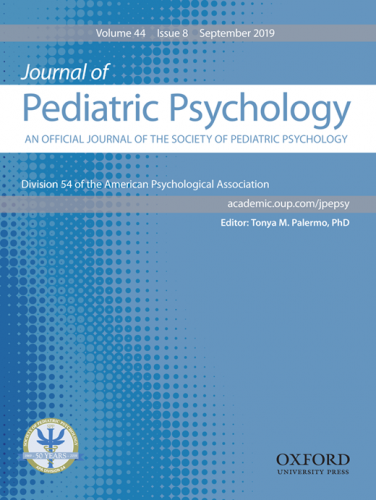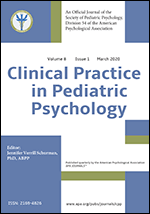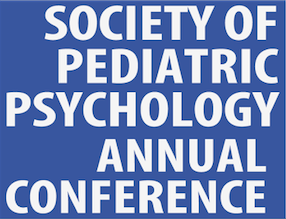Fact Sheet: Spina Bifida
Prevalence and Course
Spina bifida (SB) is a relatively common congenital birth defect that occurs in roughly 3 out of every 10,000 births in the United States. It occurs during the first month of pregnancy when the embryonic neural tube fails to close completely. The etiology of SB remains unclear; however, several genetic and environmental factors have been implicated. Genetic variations have been associated with the development of SB. Further, having family members with SB substantially increases the risk of recurrence. SB has also been associated with reduced maternal folic acid intake. The severity of SB varies, partly due to the individual’s spinal lesion level and neurological complications, such as the number of shunt infections and shunt revisions. Youth and their families manage complex medical regimens, including tasks related to catheterization, bowel programs, use of orthopedic devices, skin checks, and monitoring of shunt functioning.
Health and Psychosocial Consequences
Innovations in modern medicine have resulted in greater life expectancy for individuals with SB; nevertheless, SB is associated with a wide range of secondary conditions. These complications include bowel and bladder incontinence, varying degrees of paralysis of the lower extremities, orthopedic conditions, hydrocephalus, increased risk of neurocognitive issues, and increased risk of learning disabilities. SB is also associated with multiple psychosocial difficulties, including increased risk for internalizing symptoms, sleep disturbances, poor social competence, smaller social networks, lower levels of social acceptance, and increased parenting and family stress.
Evidence-based Assessment
Given the complexity of this condition, it is important to assess the following areas of functioning: physical characteristics (e.g., spinal lesion level and ambulation), intellectual functioning (e.g., IQ, attention and executive functions), psychosocial adjustment, family functioning, quality of peer relationships, medical adherence, autonomy-related development, and transition to adult healthcare. A multimethod and multi-informant approach is typically recommended, as youth with SB, their teachers, and their parents have shown differing perceptions of individual and family functioning.
Evidence-based Interventions
Limited evidence-based psychosocial interventions exist for families of youth with SB. Data provides support for a manualized camp-based intervention (e.g., goal setting, group workshops) targeting independence and social skills. Additionally, behavioral intervention technologies (e.g., mobile apps, websites) may improve self-management in adolescents and young adults by ameliorating condition-specific and access-related barriers (e.g., mobility).
Culture, Diversity, Demographic and Developmental Factors
Although SB occurs across all racial and ethnic groups, prevalence rates are higher in individuals of Hispanic backgrounds and in females. In addition to experiencing a constellation of deficits (e.g., cognitive, social, adaptive functioning), individuals with SB have shown resilience in some domains (e.g., family relationships, externalizing symptoms, and drug use). Lower socioeconomic status, parenting stress, poor family functioning, and higher lesion levels are associated with worse outcomes. Finally, difficulties with navigating the transition from pediatric to adult healthcare may negatively impact quality of life in young adults with SB.
Resources
-
The Spina Bifida Association: https://www.spinabifidaassociation.org
- A Guide for Medical Professionals: https://www.spinabifidaassociation.org/app/uploads/A-GUIDE-FOR-MEDICAL-PROFESSIONALS-21-2.pdf
- Learning Among Children: https://www.spinabifidaassociation.org/app/uploads/Learning-among-Children-with-Spina-Bifida1.pdf
- Sexual Health and Education: https://www.spinabifidaassociation.org/app/uploads/Sexual-Health-and-Education-1.pdf
- A Guide for School Personnel Working With Students With Spina Bifida: https://www.kennedykrieger.org/sites/default/files/library/documents/community/specialized-health-needs-interagency-collaboration-shnic/guide-school-personnel-spina-bifida.pdf
- Centers for Disease Control and Prevention: https://www.cdc.gov/ncbddd/spinabifida/index.html
Authors: Adrien M. Winning, M.A., Diana M. Ohanian, M.A., & Grayson N. Holmbeck, Ph.D.
Date of Last Update: August, 2019
References
- Burmeister, R.R. (2005). Attention problems and executive functions in children with spina bifida and hydrocephalus. Child Neuropsychology, 11(3), 265-283.
- Copp, A. J., Adzick, N. S., Chitty, L. S., Fletcher, J. M., Holmbeck, G. N., & Shaw, G. M. (2015). Spina bifida. Nature Reviews. Disease Primers, 1, 15007. https://doi.org/10.1038/nrdp.2015.7
- Holmbeck, G. N., DeLucia, C., Essner, B., Kelly, L., Zebracki, K., Friedman, D., & Jandasek, B. (2010). Trajectories of psychosocial adjustment in adolescents with spina bifida: A 6-year, four-wave longitudinal follow-up. Journal of Consulting and Clinical Psychology, 78(4), 511-525.
- Holmbeck, G. N., Zebracki, K., Papadakis, J. L., & Driscoll, C. F. B. (2017). Pediatric traumatic brain injury and spinal cord injury. In M. C. Roberts & R. G. Steele (Eds.), Handbook of Pediatric Psychology, Fifth Edition (pp. 313-322). New York: The Guilford Press.
- Lennon, J. M., Murray, C. B., Bechtel, C. F., & Holmbeck, G. N. (2015). Resilience and disruption in observed family interactions in youth with and without spina bifida: An eight-year, five-wave longitudinal study. Journal of Pediatric Psychology, 943–955. http://dx.doi.org/10.1093/jpepsy/jsv033
- O’Mahar, K., Holmbeck, G. N., Jandasek, B., & Zukerman, J. (2010). A camp-based intervention targeting independence among individuals with spina bifida. Journal of Pediatric Psychology, 35(8), 848-856.
- Sawin, K. J., Hayden Bellin, M., Builta, E., Vasel, L., & Buran, C. F. (2006). Cross-informant
- agreement between adolescents with myelomeningocele and their parents. Developmental Medicine and Child Neurology, 48(3), 188-194.
- Stiles-Shields, C., Crowe, A. N., Driscoll, C. F. B., Ohanian, D. M., Stern, A., Wartman, E., Winning, A. M., Wafford, E. Q., Lattie, E. G., & Holmbeck, G. N. (2018). A systematic review of behavioral intervention technologies for youth with chronic health conditions and physical and intellectual disabilities: Implications for adolescents and young adults with spina bifida. Journal of Pediatric Psychology, 44(3), 349-362.



